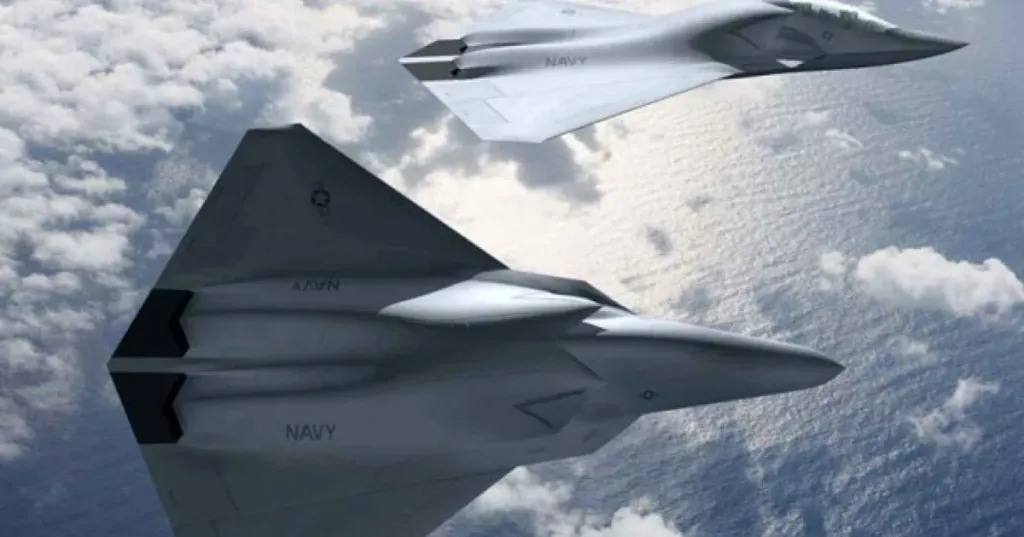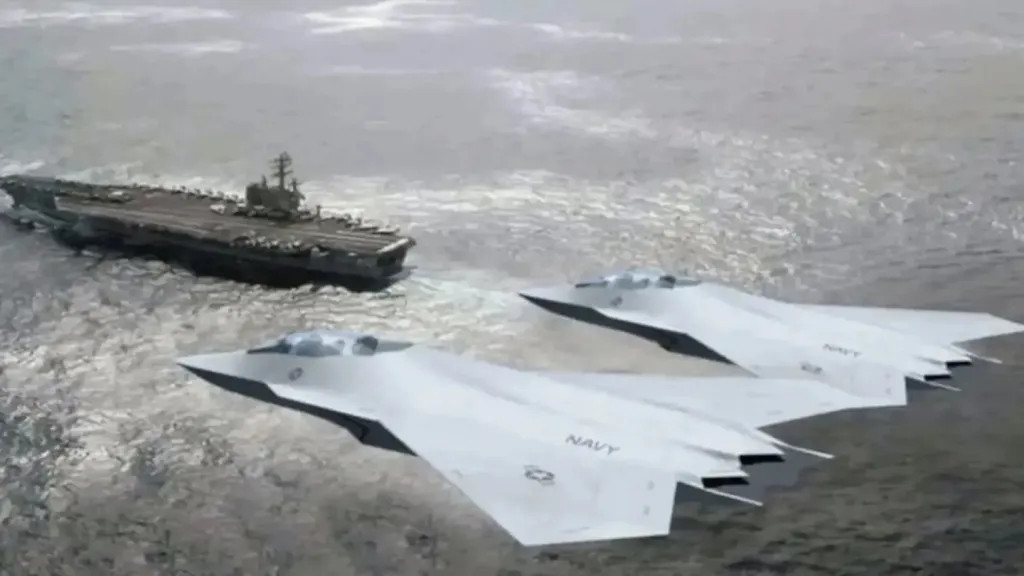Navy F/A-XX Stealth Fighter Selection Imminent: Reports
The U.S. Department of Defense may finally be ready to choose which company will develop and build the U.S. Navy’s F/A-XX next-generation carrier-based fighter. A report from Reuters today states that U.S. Defense Secretary Pete Hegseth personally gave the green light for the selection last Friday. However, this is not the first time that there have been reports that this decision was imminent, as you can read about here, but these came to nothing.

The Reuters report publishes details provided by “a U.S. official and two people familiar with the decision.” Similar comments provided to Breaking Defense were attributed to “two sources.” The upshot is that the Pentagon could choose its preferred F/A-XX design this week. The program has long been even more secretive than the U.S. Air Force’s Next Generation Air Dominance jet, which emerged earlier this year as the Boeing F-47. What is clear, however, is that the F/A-XX decision is now months later than planned.
Also interesting is the timing of this apparent move, coming so soon after President Donald Trump’s visit to the aircraft carrier USS George H.W. Bush over the weekend. He went aboard the carrier as the Navy celebrated its 250th anniversary and witnessed a firepower demonstration. While aboard the warship, Trump also met with senior Navy officials and saw the hardware of the current carrier air wing at close quarters — including the F/A-18E/F Super Hornets and E/A-18 Growlers that the F/A-XX will eventually replace.

At this point, the F/A-XX contest is understood to have narrowed to two companies.
Northrop Grumman is one of them. When it exited the USAF’s NGAD program around 2023, Northrop Grumman said it would focus on other priorities, including the F/A-XX, as well as the B-21 Raider stealth bomber. Earlier this summer, the company presented a conceptual rendering for its submission for F/A-XX.
The other F/A-XX contender is thought to be Boeing, the prime contractor for the F-47.

Meanwhile, Lockheed Martin was reportedly eliminated from the competition in March. It now seems they were about to get cut from the program prior to the choice to leave it on their own accord.
TWZ approached the Navy and the Office of the Secretary of Defense for comment on the apparent new development. Both declined to comment.
Notably, the Reuters story also includes the caveat, which it attributes to one or more of the sources, that “last-minute snags have delayed progress on the Navy jet in the past and could do so again.”
This points to the fact that, for many months now, the future of the F/A-XX program has been under scrutiny, with growing signs that it was at best in limbo. Boeing pushed back on that assertion back in June of this year.
Notably, like this report, it was Reuters that, in March of this year, published a story suggesting that the Navy was set to confirm the choice of F/A-XX that same week, something that never materialized.
In June, the Pentagon’s proposed budget for the 2026 Fiscal Year included enough funding to complete initial development work but didn’t include any further funds to actually start buying the aircraft. U.S. military officials said that this decision was made to avoid competition for resources with the Air Force’s F-47 and amid concerns about whether the U.S. industrial base would be able to handle work on both programs simultaneously.

At the same time, there have been questions, too, about whether Northrop Grumman would be able to support work on the F/A-XX while also grappling with the demands of the Air Force’s Sentinel intercontinental ballistic missile (ICBM) program, which is behind schedule and over-budget.
In July, however, the Senate Appropriations Committee advanced a draft defense spending bill that would reverse the Pentagon’s plan to freeze the F/A-XX program, as you can read about here. Approved by the committee in July, that version of the 2026 Fiscal Year Defense Appropriations Bill included $1.4 billion for F/A-XX.
The figure of $1.4 billion had also appeared in a call for additional F/A-XX funding that the Navy had reportedly included in its annual Unfunded Priority List (UPL) sent to Congress earlier in July.
While there has apparently been something of a dispute between the Navy and Pentagon leadership over the direction the program should take, the Navy has long spoken about its centrality to its future carrier aviation plans.
“The Navy has a validated requirement for carrier-based sixth-generation aircraft, and it is critical that we field that capability as quickly as possible to give our warfighters the capabilities they need to win against a myriad of emerging threats,” Adm. Daryl Caudle, the nominee to become the next Chief of Naval Operations, wrote in response to a question about F/A-XX ahead of his confirmation hearing in July.
Caudle was also present at the Navy’s 250th birthday in Norfolk, Virginia, wearing a flight suit alongside President Trump.

Not lost on Navy officials is the rapid pace of development that China is currently making in terms of carrier aviation.
The latest evidence suggests that China’s Shenyang J-35, its next-generation carrier-based fighter, may have entered limited series production and could even be in service with the People’s Liberation Army Navy (PLAN).
In a standout development last month, the PLAN demonstrated a new ability to launch and recover aircraft from a catapult-equipped aircraft carrier, its first of this kind, the Fujian. As well as the J-35, the J-15T single-seat carrier-based fighter and the KJ-600 airborne early warning and control aircraft have undertaken carrier trials on the new flattop.
With China rapidly developing even more advanced combat aircraft designs, and especially 6th generation stealth fighter-like aircraft, some variants of which will likely migrate to the carrier environment eventually, the pressure is on for the U.S. Navy to not fall behind. Calls have been growing to now move on F/A-XX in light of these developments.

China also has an expanding repertoire of advanced drones, broadly equivalent to the U.S. military’s Collaborative Combat Aircraft (CCA), some of which would be suitable for adaptation for carrier operations. This could mirror U.S. Navy plans, in which the F/A-XX should eventually be a central part of a new-look carrier air wing that could feature as much as two-thirds uncrewed aircraft.
Once again, if we’ve learnt anything from the secretive F/A-XX program, it’s that it doesn’t always take the course that might be expected. But the appearance of Trump and Hegseth very much in the spotlight as the Navy marked its 250th anniversary, and China continuing to develop its carrier aviation capabilities at an impressive rate, might indicate that a decision on who will make the Navy’s next carrier-based fighter is finally due.
Contact the author: [email protected]















